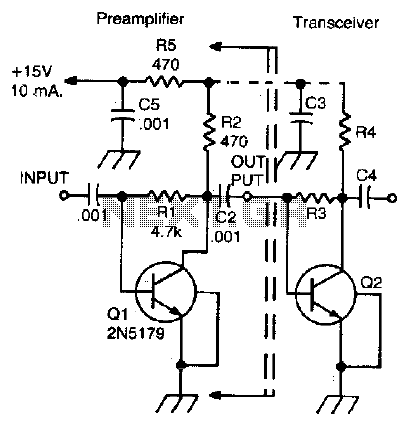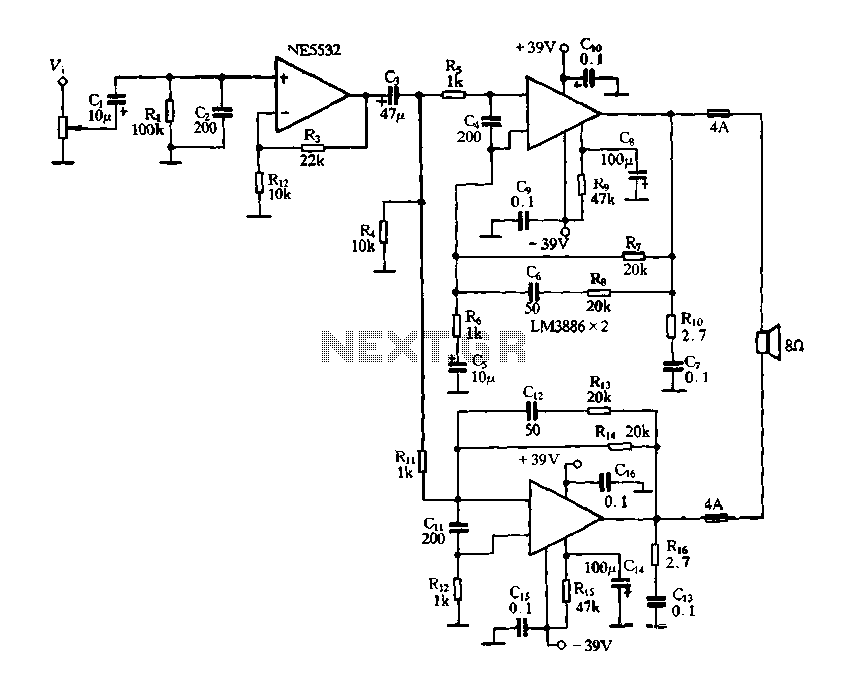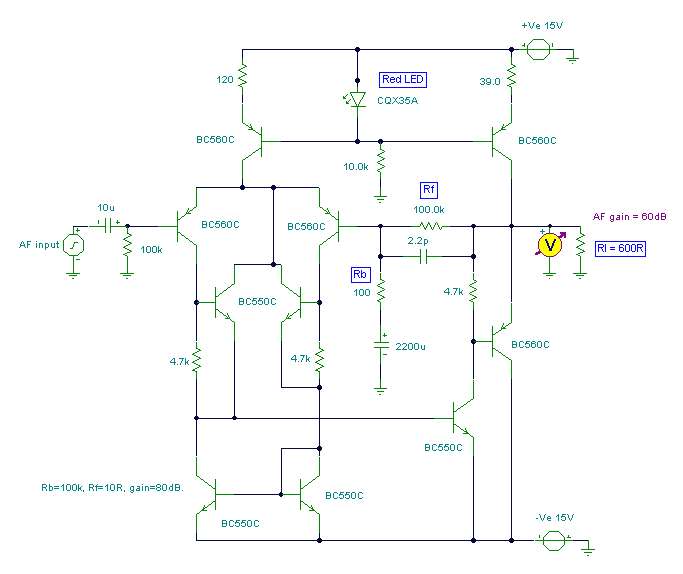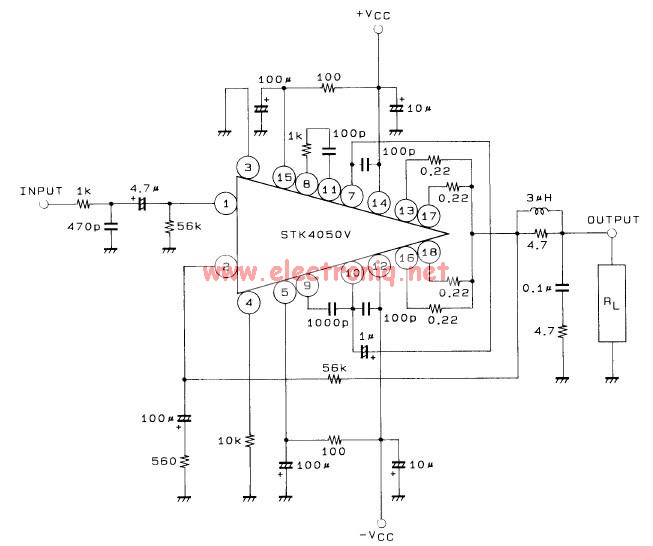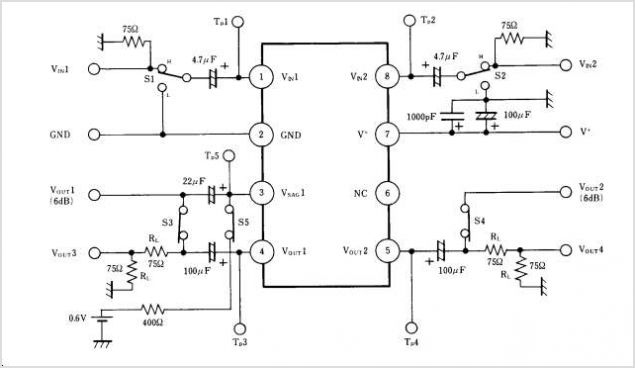
Source suspended programmable instrumentation amplifier PGA203
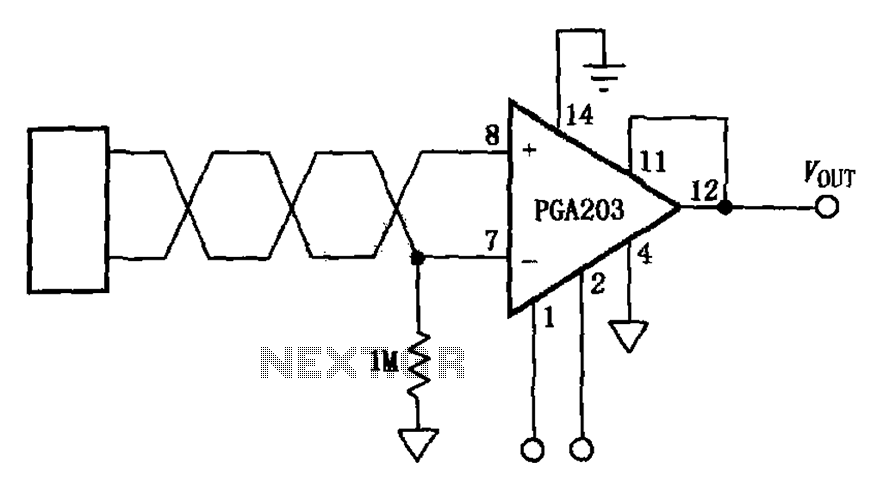
The circuit features a PGA203 programmable instrumentation amplifier. The input signal is applied to the twisted pair inputs of the PGA203, which subsequently amplifies the output signal. It is important to note that the input pins of the PGA203 are connected to a 1M resistor to provide the necessary input bias current for the channel amplifier.
The PGA203 is a precision instrumentation amplifier designed for applications requiring high accuracy and low noise. It operates with a wide supply voltage range and offers programmable gain settings, making it suitable for various signal conditioning tasks. The twisted pair inputs help in minimizing noise and interference, which is critical in sensitive measurement applications.
In this configuration, the 1M resistor connected to the input pins plays a vital role in setting the input bias current. This bias current is essential for the proper functioning of the amplifier, ensuring that it operates within its optimal range. The choice of a 1M resistor balances the need for sufficient bias current while minimizing the impact on the input signal.
The output of the PGA203 can be further processed or fed into an analog-to-digital converter (ADC) for digital signal processing. Proper decoupling capacitors should be placed near the power supply pins of the PGA203 to filter out any noise from the power supply, enhancing the overall performance of the circuit.
Overall, this schematic effectively illustrates the use of the PGA203 in amplifying low-level signals with high precision, making it a valuable component in instrumentation and measurement systems. As shown in FIG source constituted by PGA203 programmable instrumentation amplifier suspended. Because the input signal is applied to PCA203 twisted pair inputs, so in suspensi on, after the PGA203 amplifies the output signal. Here we should note that in PGA203 input feet to a 1M resistor to provide channel amplifier input bias current.
The PGA203 is a precision instrumentation amplifier designed for applications requiring high accuracy and low noise. It operates with a wide supply voltage range and offers programmable gain settings, making it suitable for various signal conditioning tasks. The twisted pair inputs help in minimizing noise and interference, which is critical in sensitive measurement applications.
In this configuration, the 1M resistor connected to the input pins plays a vital role in setting the input bias current. This bias current is essential for the proper functioning of the amplifier, ensuring that it operates within its optimal range. The choice of a 1M resistor balances the need for sufficient bias current while minimizing the impact on the input signal.
The output of the PGA203 can be further processed or fed into an analog-to-digital converter (ADC) for digital signal processing. Proper decoupling capacitors should be placed near the power supply pins of the PGA203 to filter out any noise from the power supply, enhancing the overall performance of the circuit.
Overall, this schematic effectively illustrates the use of the PGA203 in amplifying low-level signals with high precision, making it a valuable component in instrumentation and measurement systems. As shown in FIG source constituted by PGA203 programmable instrumentation amplifier suspended. Because the input signal is applied to PCA203 twisted pair inputs, so in suspensi on, after the PGA203 amplifies the output signal. Here we should note that in PGA203 input feet to a 1M resistor to provide channel amplifier input bias current.
